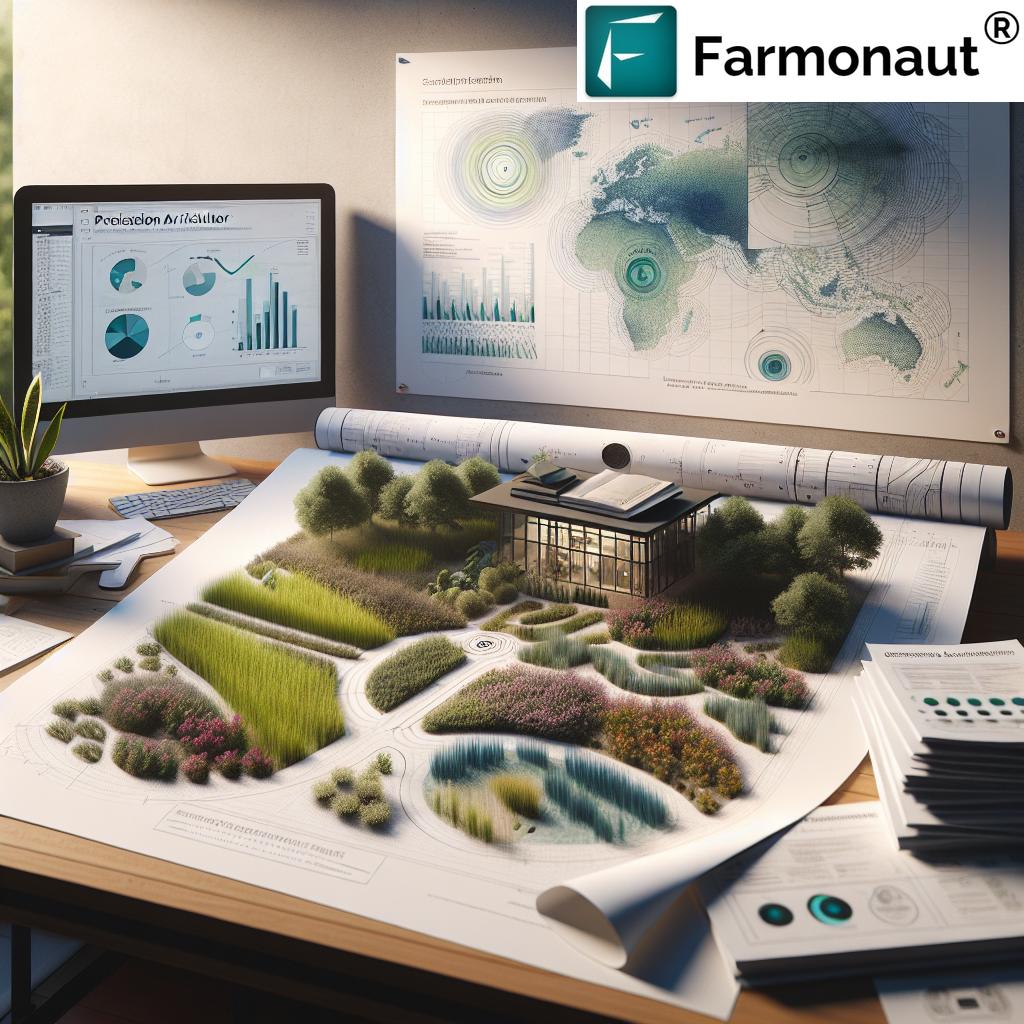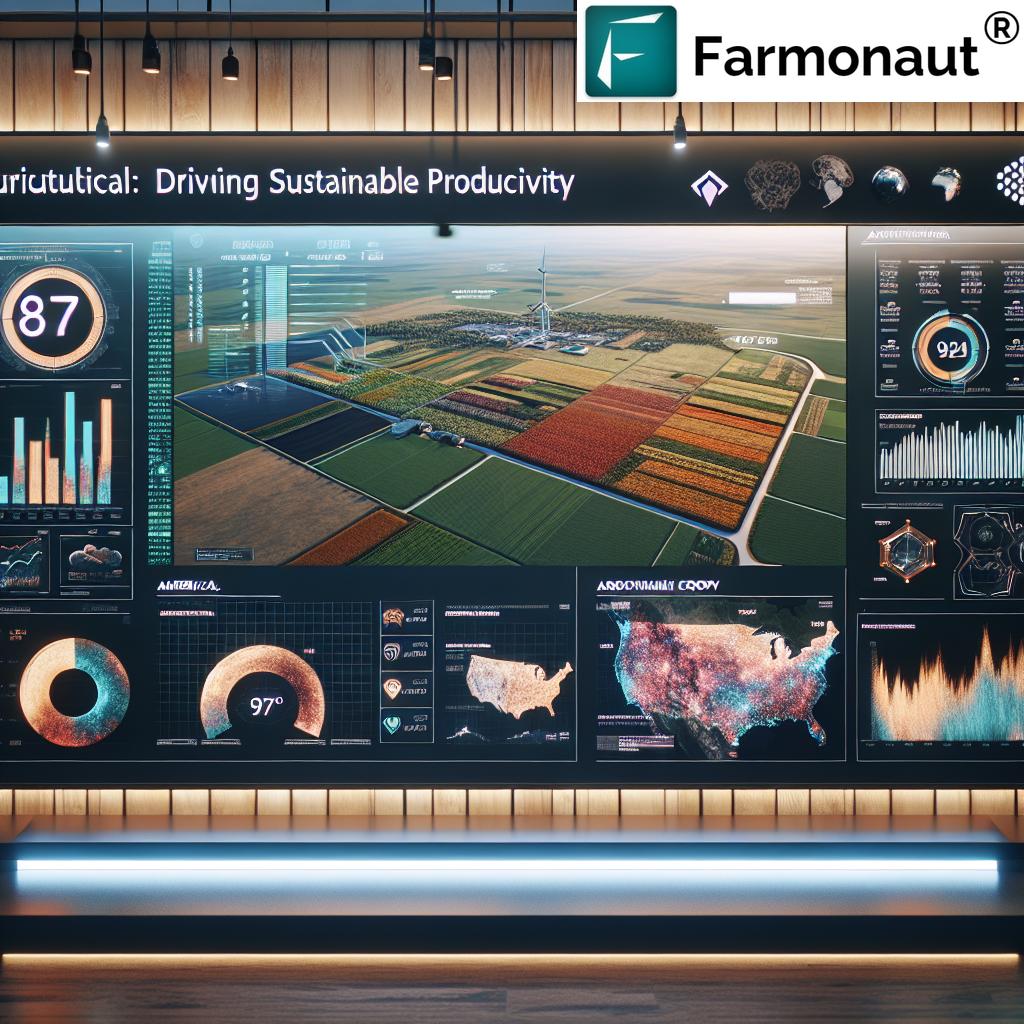Sycamore Tree, Leaf & Species: Benefits in US & Mexico for 2026
The Sycamore Tree: An Ecological and Economic Asset in Forestry and Agriculture
“Over 10 native sycamore species boost climate resilience across more than 40 U.S. states.”
Introduction: Sycamore Trees at the Heart of Sustainable Land Management
Sycamore trees, prominent members of the genus Platanus, hold significant value in both ecological and economic contexts. Particularly in the United States and Mexico, species such as the American sycamore tree (Platanus occidentalis) and the Mexican sycamore tree (Platanus mexicana) are celebrated for their vigorous growth, resilience, and supporting role in forestry, agriculture, and climate resilience.
As we move into 2026 and beyond, understanding the full spectrum of the sycamore’s benefits—from soil stabilization and flood mitigation to carbon sequestration and timber production—remains critical for sustainable environmental stewardship and land development in both nations.
This comprehensive guide explores the botanical characteristics, leaf structure, ecological contributions, and the agricultural and economic impact of sycamore species. Whether considering reforestation projects in the Mississippi Valley or riparian restoration in northern Mexico, the sycamore stands as a keystone species for 21st-century land management.
Botanical Overview and Native Habitat
The genus Platanus encompasses several prominent sycamore tree species native to North America. Of these, the American sycamore tree (Platanus occidentalis) is native to the eastern and central United States, thriving in rich alluvial soil along riverbanks and floodplains. In contrast, the Mexican sycamore tree (Platanus mexicana)—found in tropical and subtropical regions of Mexico and parts of Central America—favors moist riparian zones and higher elevations.
- American sycamores typically reach heights of 30-40 meters and are recognized for their broad, stately canopies.
- Mexican sycamores thrive in warmer zones, often reaching similar heights and spreading rapidly thanks to their adaptability.
These trees are admired for their ability to grow in varying soil types and climates, from river valleys in the US Midwest to the rugged subtropical uplands of Mexican states such as Nuevo León and San Luis Potosí. Their rapid growth rates, large leaves, and deep root systems make sycamores invaluable for land stabilization and ecological restoration.
-
Ideal for:
- Riparian buffer zones
- Floodplain reforestation
- Erosion control
- Urban and rural windbreaks
American Sycamore Tree & Mexican Sycamore Tree Leaf: Structure and Significance
The sycamore tree leaf is among the most distinctive foliage types in the forests and landscapes of the US and Mexico. Large and typically three to five lobed with rough texture, these leaves create an impressive canopy that plays a vital role in both microclimate regulation and carbon capture.
- Leaf structure: Broad, palmately lobed (three to five lobes), serrated or wavy edges, rough on top, fuzzy beneath.
- Size: Among the largest deciduous leaves in North America (20-25cm/8-10in in diameter, sometimes larger).
- Color: Bright green in spring and summer, yellow to brown in autumn.
- Contribution:
- Large surface area—maximizes gas exchange, boosting photosynthesis.
- Dense canopy—provides deep shade, cools the soil, reduces evaporation, and protects understory crops.
- High organic content—decays to improve soil structure and nutrient cycling.
The annual fall of leaves (“leaf litter”) represents a critical ecological contribution, returning nutrients such as nitrogen and carbon to the soil and creating habitats for myriad decomposer organisms—effectively supporting the health and productivity of entire ecosystems.
Sycamore Species Benefit Overview Table
| Sycamore Species | Native Region | Adaptability (Estimated Range) | Climate Resilience (Low-High) | Ecological Benefits | Agricultural Uses |
|---|---|---|---|---|---|
| Platanus occidentalis (American Sycamore) | Eastern & Central United States | Zones 4–9: High adaptability, tolerant of wet, clay, loam, and silt soils | High |
|
|
| Platanus mexicana (Mexican Sycamore) | Tropical & Subtropical Mexico, Central America | Zones 7–10: Thrives in moist, calcareous, alluvial, or volcanic soils | High |
|
|
| Platanus racemosa (California Sycamore) | California & Baja California | Zones 7–10: Prefers streambanks & canyons, drought-resistant | Medium-High |
|
|
“Sycamore trees can sequester up to 25 kg of carbon per year, aiding sustainable land management.”
Ecological Role and Contributions of Sycamore Tree
Sycamore trees provide unique, multi-layered benefits to the ecosystems of the United States and Mexico:
- Flood Mitigation: Deep roots and fast growth enable sycamores to absorb excess water during floods, reducing disaster risks in vulnerable floodplains and river valleys.
- Erosion Control: Extensive root systems bind soil and prevent erosion on riverbanks, hillsides, and agricultural lands—essential for sustainable land management.
- Biodiversity Enhancement: Sycamore stands provide canopy cover and habitat for birds, small mammals, insects, and mycorrhizal fungi. Leaf litter supports critical soil microbe populations, boosting nutrient cycling.
- Carbon Sequestration: The broad sycamore tree leaf collects atmospheric carbon dioxide, capturing up to 25 kg of carbon per tree annually. This makes sycamore-dense areas powerful carbon sinks. (Learn more about carbon footprint tracking and how Farmonaut’s solutions help identify high-sequestration zones.)
- Microclimate Regulation: Dense canopies cool the air, retain soil moisture, and protect crops or native undergrowth from heat stress—especially vital in regions facing climate extremes.
These contributions have become increasingly emphasized in sustainable forestry, agroforestry, and land restoration practices across both the US and Mexico.
Sycamore Tree in Forestry and Timber Production
The rapid growth and robust hardwood qualities of sycamores—especially the American sycamore tree and Mexican sycamore tree—are driving a new wave of sustainable forestry practices in 2026 and beyond.
-
Commercial Timber: Sycamore wood is valued for its pale color, fine grain, and durability. It resists warping and takes finishes well, making it popular for cabinetry, furniture, and interior trim.
- Often used for plywood cores, flooring substrates, and musical instrument making.
- Fast Growth, Renewable Resource: With annual growth rates often outpacing oak or maple, sycamore stands regenerate quickly, reducing harvesting pressures on slower-growing native forests.
- Soil Remediation: New research emphasizes the value of sycamores in reforesting brownfields, urban corridors, and degraded rural lands, thanks to their robust adaptation to disturbed soils.
- Riparian Forest Enhancement: In areas such as the Ohio River Valley, sycamores are integral to buffer plantings along agricultural waterways, supporting water quality.
Sustainable forestry management increasingly depends on integrating sycamore species for these reasons, fortifying both economic returns and environmental services.
Sycamores in Agriculture, Agroforestry, and Sustainable Land Use
The sycamore tree is a cornerstone of modern agroforestry and sustainable agricultural development in both the United States and Mexico as we progress through 2026. Their broad leaves and fast canopy spread enable multiple agro-ecological practices:
- Windbreaks and Shelterbelts: Planting sycamores on field borders protects crops from wind damage, reduces soil moisture loss, and provides livestock shelter.
- Silvopasture: Introducing sycamores into pastureland enhances shade, increases forage quality, and supports animal welfare while diversifying farm output through timber harvest.
- Buffer Strips Along Waterways: Sycamores in riparian buffer zones filter runoff, reducing agricultural pollution and stabilizing banks.
- Intercropping: On smallholder plots, sycamores can be spaced to shade sensitive crops like coffee or cacao (in Mexico), lowering heat stress and improving yield resilience.
- Organic Matter Contribution: Annual sycamore leaf fall rapidly decomposes, boosting soil structure, microbial life, and water retention.
Sycamores are thus an indispensable asset for sustainable agricultural practices, climate adaptation strategies, and long-term soil health.
For those seeking actionable insights on timber plantation health or sustainable agroforestry, Farmonaut offers satellite-based monitoring tools, supporting evidence-based land management decisions for faster, safer, and more resilient crop and tree systems.
Climate Resilience, Adaptability, and Riparian Buffer Applications
In the face of more variable and extreme climate events, the adaptability and climate resilience of sycamore species are highly valued across US and Mexican ecosystems:
- Drought & Flood Tolerance: Both American sycamore and Mexican sycamore can survive seasonal variability. Planted along riparian zones, they thrive during both wet periods (flood mitigation) and brief droughts.
- Pest & Disease Resistance: Hybridizing native sycamores increases their resilience to pathogens, extending their suitability to regions increasingly affected by climate-driven outbreaks.
- Heat Island Buffer: In urban landscapes, sycamores reduce the urban heat island effect, providing deep shade and improving air quality.
- Rapid Restoration of Degraded Lands: On damaged industrial or agricultural sites, sycamores grow quickly, stabilizing soil and providing rapid green cover.
Sycamore trees remain a linchpin species for climate adaptation in agricultural, forestry, and conservation planning in 2026 and beyond.
Sycamore Leaf, Carbon Capture & Environmental Impact
The large surface area of each sycamore tree leaf makes these species highly effective at carbon sequestration, a critical environmental service for climate mitigation and sustainable agriculture.
- Annual Carbon Capture: Mature sycamore trees can each sequester up to 25 kg of carbon per year, helping offset emissions from nearby agricultural or industrial activities.
- Leaf Litter & Ecosystem Health: Each fall, broad leaves drop, decomposing to form humus—this process increases soil organic matter and supports beneficial fungi and bacteria.
- Air Quality Improvement: Dense canopies filter airborne dust and pollutants, improving both rural and urban environments.
- Biodiversity Support: Large leaves offer shelter for pollinators and nesting birds, while decaying wood supports specialist fungi critical for nutrient cycling.
Modern sustainable land management, particularly in North American river valleys and Mexican agricultural zones, now integrates sycamore trees for these ecological benefits.
To track, measure, and optimize soil carbon capture and greenhouse gas impacts, Farmonaut provides a robust carbon footprinting solution for large farms, forests, and reforestation projects.
Management & Challenges: Pests, Diseases, and Solutions
While sycamore trees are widely celebrated for ecology and timber, effective management must address persistent challenges:
- Anthracnose Disease: This fungal condition causes leaf spots, cankers, and premature defoliation—threatening tree vitality, especially in wetter climates.
- Root Rot: Poor drainage can encourage pathogenic fungi, causing dieback and tree failure in plantation settings.
- Insect Pests: Scale insects, leaf miners, and borers occasionally affect younger trees.
- Urban Stress: Soil compaction, air pollution, and limited root zone in city plantings can reduce tree lifespan.
Modern practices leverage:
- Disease-Resistant Cultivars: Breeding programs for both American sycamore tree and Mexican sycamore tree increasingly release improved lines.
- Integrated Pest Management: Combining resistant varieties with eco-friendly fungicides and proactive monitoring minimizes losses.
- Landscape-Level Monitoring: Large-scale remote monitoring solutions (such as those offered by Farmonaut) help foresters and land managers detect stress, disease outbreaks, or environmental shifts early, ensuring timely intervention.
Modern Technology, Sycamore Monitoring & Precision Solutions
Precision agriculture and forestry are rapidly transforming sycamore management in the US and Mexico for 2026:
-
Satellite-Based Monitoring:
High-resolution satellite images capture canopy health, soil moisture, and stand biomass across thousands of hectares—supporting drought resilience and early disease detection. -
NDVI & Crop Health Analytics:
Normalized Difference Vegetation Index (NDVI), derived from satellite images, visualizes subtle stress in sycamore stands and mixed croplands, guiding adaptive irrigation or fertilizer input. -
Fleet & Resource Optimization:
Smart fleet and resource tracking can streamline plantation management, reforestation logistics, and harvest planning at a landscape scale. -
Traceability:
Blockchain traceability solutions increase transparency in supply chains for sycamore timber and agroforestry products, ensuring sustainable sourcing and building market trust. -
Loans & Insurance:
Satellite-based verification for crop or timber insurance, loans, and carbon credit programs de-risks investment in sycamore restoration and agroforestry projects.
How Farmonaut Supports Sycamore-Based Land Management
As a satellite technology leader, we at Farmonaut provide advanced, affordable, and scalable solutions that empower sustainable sycamore and mixed-forest management—across both North and Central American regions.
- Satellite Imagery & AI Analysis: We deliver multispectral satellite-based monitoring of sycamore growth, canopy health, and soil conditions, supporting rapid detection of stress, disease, or water issues in forests, agroforestry systems, and riparian buffers.
- Environmental Impact & Carbon Tracking: Our platform allows users to assess the carbon sequestration value of sycamore-dense landscapes, guiding reforestation projects and sustainable agricultural transitions.
- Resource & Fleet Management: Through digital fleet management, landowners optimize reforestation logistics and resource allocation, maximizing ecological gains from sycamore planting and harvest schedules.
- Blockchain Traceability: We ensure the transparency of sycamore timber supply chains, supporting sustainable certification and market access for US, Mexican, and international buyers.
- Accessibility: Our services are available via Android, iOS, web platforms, and API, allowing seamless integration into workflows of farmers, foresters, businesses, and government agencies.
To learn more, developers can explore our comprehensive API documentation or view real-time monitoring features via the Farmonaut app.
Maximizing the ecological and economic value of sycamore tree species is simpler than ever with affordable subscription options for individuals and organizations of all sizes. Get started with Farmonaut’s API today for real-time data and insights!
FAQ: Sycamore Tree, Leaf & Species
What is the difference between American sycamore and Mexican sycamore?
The American sycamore tree (Platanus occidentalis) is native to the eastern and central United States, thrives along riverbanks and floodplains, and is tolerant of cold. The Mexican sycamore tree (Platanus mexicana) is native to Mexico and Central America, favors warmer climates and moist soils, and is known for even faster growth, broad leaves, and smoother bark. Both are valuable for timber, erosion control, and climate adaptation.
How do sycamore trees improve soil health?
Sycamores add organic matter through annual leaf fall, increase soil moisture retention with their shade, stabilize soil with deep roots, and support beneficial soil microbes—all crucial for sustainable agricultural and forestry practices.
Are sycamore trees good for carbon sequestration?
Absolutely. Mature sycamore trees can sequester up to 25 kg of carbon per year, making them a top choice for climate mitigation efforts in riparian restoration and reforestation.
What are common challenges in managing sycamore species?
Main challenges are anthracnose disease (a fungus causing leaf loss), root rot in poor drainage soils, and occasional insect infestations. Improved cultivars and integrated management help mitigate risks.
How can technology help in sycamore tree management?
Satellite monitoring, AI-based analytics, and real-time reporting (as offered by Farmonaut) allow for early identification of disease, drought, or stress. Digital tools can optimize planting, management, and harvest across large landscapes, maximizing ecological and economic returns.
Where can I learn more or implement digital monitoring for my sycamore projects?
Farmonaut provides affordable, scalable satellite monitoring, AI, and blockchain-based traceability. Access web and mobile solutions via the Farmonaut app or API.
Conclusion: Sycamores for a Sustainable Future
As the US and Mexico strive for sustainable land management in the coming decade, the sycamore tree—in all its native and introduced forms—emerges as a foundation of modern ecological and agricultural resilience.
- Ecological Asset: Their role in soil stabilization, carbon capture, and biodiversity is invaluable.
- Economic Value: Fast-growing sycamore stands provide renewable timber, shade, and buffer services, lowering operational costs for farmers and foresters.
- Climate Resilience: Adaptability to floods, droughts, and soil types position sycamores as a critical tool for climate-smart forestry and agriculture.
- Technology Integration: Modern digital solutions, such as Farmonaut’s satellite and AI platform, empower land managers to maximize the ecological and economic benefits of sycamores, ensuring these iconic trees support healthy ecosystems for generations.
Embracing the sycamore tree’s unique blend of ecological function and commercial value is a step toward resilient, sustainable, and economically vibrant landscapes in both the United States and Mexico—as we move through 2026 and beyond.














